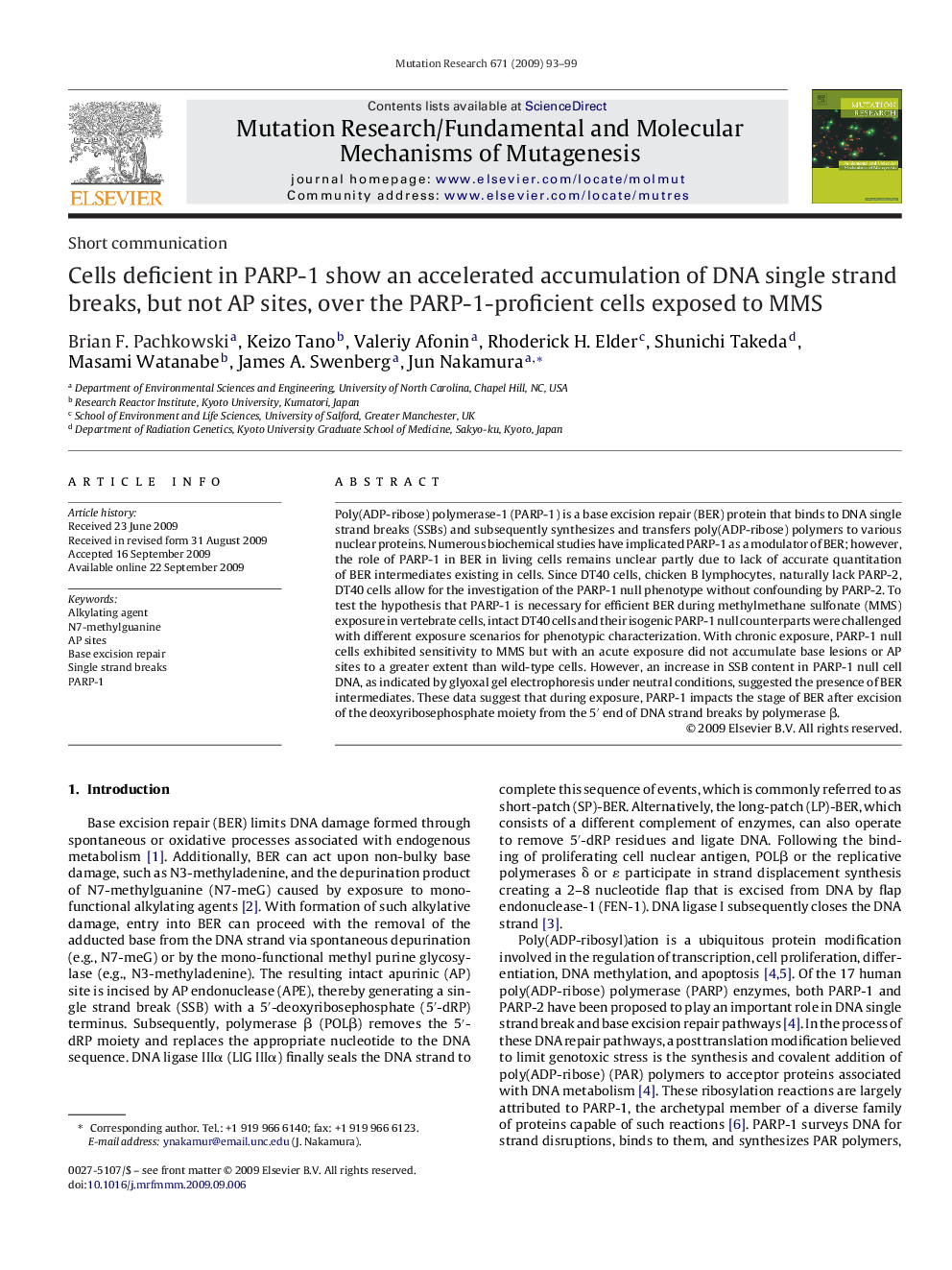| کد مقاله | کد نشریه | سال انتشار | مقاله انگلیسی | نسخه تمام متن |
|---|---|---|---|---|
| 2146850 | 1548380 | 2009 | 7 صفحه PDF | دانلود رایگان |
عنوان انگلیسی مقاله ISI
Cells deficient in PARP-1 show an accelerated accumulation of DNA single strand breaks, but not AP sites, over the PARP-1-proficient cells exposed to MMS
دانلود مقاله + سفارش ترجمه
دانلود مقاله ISI انگلیسی
رایگان برای ایرانیان
کلمات کلیدی
موضوعات مرتبط
علوم زیستی و بیوفناوری
بیوشیمی، ژنتیک و زیست شناسی مولکولی
تحقیقات سرطان
پیش نمایش صفحه اول مقاله

چکیده انگلیسی
Poly(ADP-ribose) polymerase-1 (PARP-1) is a base excision repair (BER) protein that binds to DNA single strand breaks (SSBs) and subsequently synthesizes and transfers poly(ADP-ribose) polymers to various nuclear proteins. Numerous biochemical studies have implicated PARP-1 as a modulator of BER; however, the role of PARP-1 in BER in living cells remains unclear partly due to lack of accurate quantitation of BER intermediates existing in cells. Since DT40 cells, chicken B lymphocytes, naturally lack PARP-2, DT40 cells allow for the investigation of the PARP-1 null phenotype without confounding by PARP-2. To test the hypothesis that PARP-1 is necessary for efficient BER during methylmethane sulfonate (MMS) exposure in vertebrate cells, intact DT40 cells and their isogenic PARP-1 null counterparts were challenged with different exposure scenarios for phenotypic characterization. With chronic exposure, PARP-1 null cells exhibited sensitivity to MMS but with an acute exposure did not accumulate base lesions or AP sites to a greater extent than wild-type cells. However, an increase in SSB content in PARP-1 null cell DNA, as indicated by glyoxal gel electrophoresis under neutral conditions, suggested the presence of BER intermediates. These data suggest that during exposure, PARP-1 impacts the stage of BER after excision of the deoxyribosephosphate moiety from the 5Ⲡend of DNA strand breaks by polymerase β.
ناشر
Database: Elsevier - ScienceDirect (ساینس دایرکت)
Journal: Mutation Research/Fundamental and Molecular Mechanisms of Mutagenesis - Volume 671, Issues 1â2, 1 December 2009, Pages 93-99
Journal: Mutation Research/Fundamental and Molecular Mechanisms of Mutagenesis - Volume 671, Issues 1â2, 1 December 2009, Pages 93-99
نویسندگان
Brian F. Pachkowski, Keizo Tano, Valeriy Afonin, Rhoderick H. Elder, Shunichi Takeda, Masami Watanabe, James A. Swenberg, Jun Nakamura,